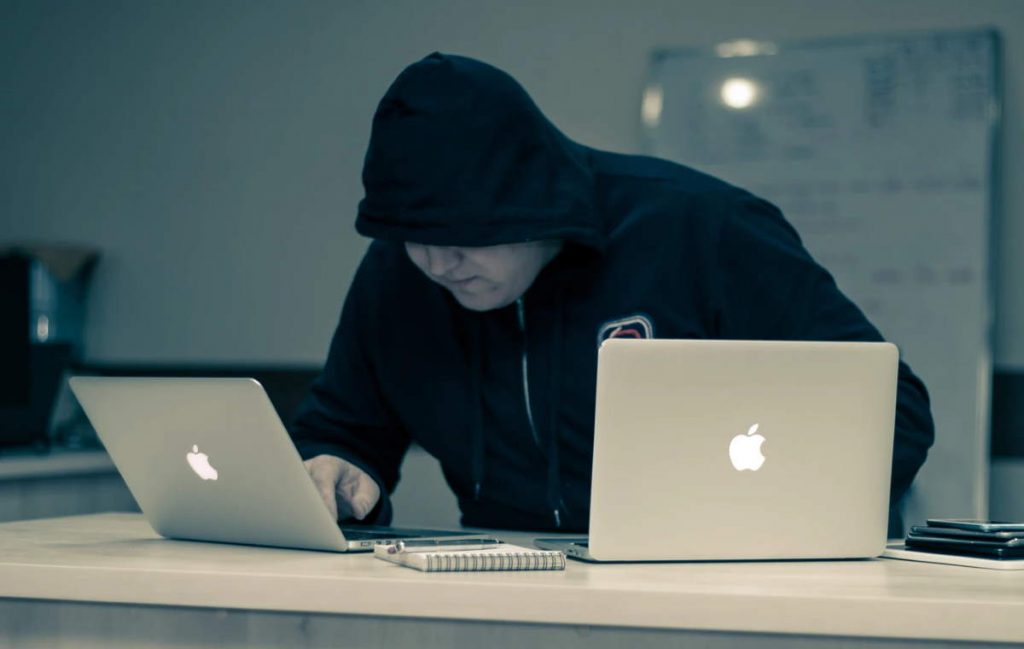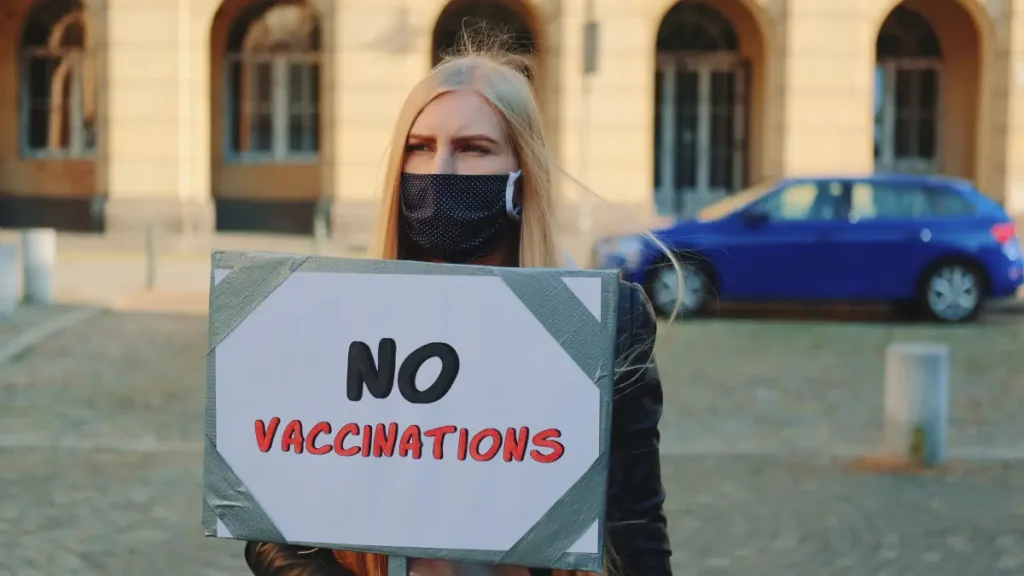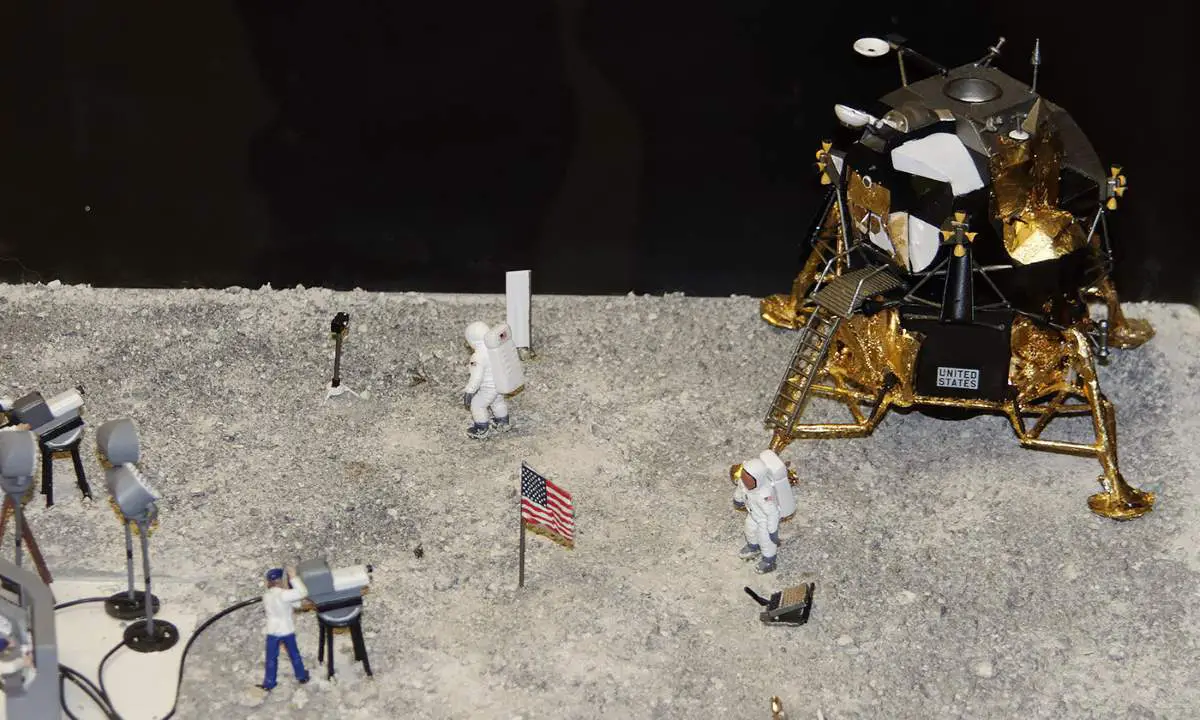“Easy to make everything a conspiracy theory when you don’t know how anything works.” [Brandon Bradford]
In today’s digital age, information is abundant, yet so is misinformation. One of the emerging challenges for the modern era is the widespread belief in conspiracy theories. The quote above provides a succinct analysis of why they emerge: a lack of understanding. But there’s more to the story. Here’s a closer look.
1. Ignorance as Fertile Ground
1.1. The Unknown and the Need for Explanations
1.1.1. The Innate Human Curiosity
From the earliest ages of humanity, our species has been driven by an insatiable curiosity. This quest for knowledge led us to discover fire, wheel, map the stars, and decode the mysteries of DNA. It’s in our nature to want to understand the world around us, to find patterns, and to seek meaning in everything.
1.1.2. The Discomfort of Ambiguity
Yet, as much as we have evolved, there remains a deep-rooted psychological discomfort with ambiguity and the unknown. Evolutionarily, this can be traced back to our survival instincts. Unknown factors, in prehistoric times, could represent potential threats. Thus, our brains became wired to prefer certainty over uncertainty, even if that certainty is based on incomplete or inaccurate information.
1.1.3. The Lure of Simplicity in a Complex World
As our world has grown increasingly complex, with rapid technological advancements and an overload of information, so too has our exposure to matters beyond immediate comprehension. When faced with such intricacies, there’s a temptation to simplify, to make it understandable, and to find a narrative that aligns with our worldview. This is where easily digestible explanations come into play. They offer solace, a semblance of understanding, even if they are not entirely accurate.
1.1.4. Erroneous Theories and Their Appeal
These simplified narratives, however well-intentioned, can sometimes lead us astray. In the absence of complete understanding, humans often resort to creating stories or theories that might not be grounded in reality but offer emotional or cognitive relief. The danger here is that these theories, once believed, can shape perceptions, influence decisions, and sometimes even alter the course of events in the real world.
The human need to understand and explain is both a gift and a potential pitfall. While it drives us to innovate and explore, it also can lead us into the comforting embrace of oversimplified, and often incorrect, explanations. Recognizing this tendency is the first step in ensuring we remain critical thinkers in an age overflowing with information.

1.2. The Rise of the Dunning-Kruger Effect
1.2.1. Origins and Implications
Developed by David Dunning and Justin Kruger in 1999, the Dunning-Kruger effect originated from psychological studies aiming to understand patterns of self-assessment. The results were both fascinating and alarming: those who performed poorly in various tasks often lacked the metacognitive ability to recognize their incompetence, leading to inflated self-assessments.
1.2.2. How Dunning-Kruger Effect Influences Perception
The Dunning-Kruger effect can be particularly potent in areas requiring deep expertise or nuanced understanding. It’s not merely about thinking one knows when one doesn’t; it’s also about being confident in that flawed assessment. When individuals believe they have a comprehensive grasp on a subject, even when they don’t, they’re less likely to seek out or accept corrective information. This confidence can be misleading, creating an illusion of expertise where there is none.
1.2.3. Modern Triggers for the Effect
In our digital age, with a wealth of information at our fingertips, it’s easy for someone to read a few articles or watch a couple of videos and feel they’ve attained mastery on a topic. This superficial dive can bolster their confidence, making them susceptible to the Dunning-Kruger effect. Platforms like social media, which often prioritize brevity and virality over depth, can exacerbate this, giving voice and apparent credibility to those who may not truly understand the complexities of what they discuss.

Related: I did my own research [meme]
1.2.4. The Link to Conspiracy Theories
Given the confidence stemming from the Dunning-Kruger effect, individuals may be more likely to trust their judgment over that of experts or established sources. This mindset can make them susceptible to conspiracy theories, which often offer simple explanations for complex phenomena. Since these theories often appear to “connect the dots” in ways that seem intuitive (even if incorrect), those who overestimate their own understanding might find them particularly compelling.
In the face of such challenges, education and self-awareness become paramount. Understanding the Dunning-Kruger effect and its implications can serve as a check on one’s confidence, prompting deeper exploration and critical thinking before drawing conclusions.
2. The role of the Internet in spreading conspiracy theories

2.1. Echo Chambers and Confirmation Bias
2.1.1. The Digital Architecture of Echo Chambers
Modern social media platforms utilize sophisticated algorithms to maximize user engagement. These algorithms, driven by data on user behavior, preferences, and interactions, curate content tailored to individual tastes. While this might seem beneficial in delivering a personalized experience, it inadvertently traps users in bubbles where they’re mostly exposed to what they already like or believe.
2.1.2. The Vicious Cycle of Self-Reinforcement
Once inside this echo chamber, users find their beliefs continually reinforced. Each post, like, and share acts as a feedback loop, further informing the platform of their preferences, which in turn narrows down the content they’re exposed to. Over time, the range of information and perspectives they encounter becomes increasingly limited.
2.1.3. Confirmation Bias: An Age-old Cognitive Shortcut
This phenomenon intersects with a well-documented psychological tendency: confirmation bias. It’s a cognitive shortcut humans evolved with, likely because it was more efficient for our ancestors to process information that aligned with their existing knowledge. This bias drives individuals to prioritize and assign more credibility to information that aligns with their pre-existing beliefs. Contradictory evidence or perspectives, even if valid, might be overlooked, forgotten, or dismissed.
2.1.4. The Synergistic Effect of Echo Chambers and Confirmation Bias
When the digital echo chambers of social media intersect with our innate confirmation bias, the result is a powerful force that amplifies and entrenches beliefs. This combination can make individuals more resistant to changing their views, even when confronted with factual information. Furthermore, it fosters polarization, as users become more entrenched in their perspectives and less willing or able to understand opposing viewpoints.
2.1.5. The Need for Intentional Diversification
To counteract this, users need to be proactive in diversifying their information sources. This might mean following a varied set of news outlets, engaging with content that offers different perspectives, or actively seeking out debates and discussions that challenge one’s beliefs.
Understanding the interplay between digital echo chambers and confirmation bias is crucial in the digital age. By being aware of these forces, individuals can take steps to ensure they’re getting a more rounded view of the world, promoting understanding and reducing unwarranted polarization.
2.2. Speedy Spread of Misinformation in the Digital Age
2.2.1. The Democratization of Voice
The digital revolution, with platforms like social media and blogging sites, has empowered individuals to share their thoughts, experiences, and narratives with global audiences. Previously, major media outlets controlled the majority of information flow, but now, almost anyone can be a content creator or distributor.
2.2.2. The Double-edged Sword
While this democratization has led to positive outcomes, such as amplifying marginalized voices and encouraging diverse perspectives, it has also opened the floodgates for misinformation. Without traditional gatekeeping, there’s less regulation and oversight on the authenticity of the content being disseminated.
2.2.3. Viral Spreads and Digital Algorithms
Digital platforms, particularly social media, are engineered for virality. Content that evokes strong emotions, even if it’s misleading, tends to get more shares, likes, and comments. Algorithms interpret this engagement as a signal of the content’s value, leading to its wider dissemination. This cycle can allow conspiracy theories or false information to gain traction and spread like wildfire, often outpacing the spread of factual counter-narratives.
2.2.4. The Challenge of Timely Fact-checking
With the sheer volume of information being shared online, fact-checking becomes a daunting task. By the time false information is debunked, it might have already been viewed and shared by millions. Additionally, even when corrected, research has shown that many individuals tend to stick with their original beliefs, particularly if the misinformation aligns with their preconceptions.
3. The Real-World Consequences and Dangers of Conspiracy Theories
3.1. Societal Polarization
Conspiracy theories, while they may seem benign or even amusing to some, carry significant societal weight. Their rise and spread can lead to deep-rooted polarization within communities and nations.
3.2. Distorted Realities
At their core, conspiracy theories present an alternative narrative, often contradicting established facts. These narratives, which can seem compelling to believers, set the stage for two or more groups to have fundamentally different understandings of events, situations, or policies.
3.3. The Erosion of Trust
One of the hallmark effects of widespread conspiracy thinking is the erosion of trust in institutions, be it media, government, or academia. When segments of the population believe that these entities are involved in large-scale deceit or cover-ups, it undermines the very foundation of cohesive societies. Trust is a binding agent in any community, and its degradation can lead to cynicism, apathy, or even hostility.
3.4. Fragmentation of Discourse
Civil discourse- the cornerstone of democratic societies- becomes increasingly challenging in the face of widespread conspiracy beliefs. Debates and discussions are no longer grounded in a shared reality, making constructive dialogue almost impossible. Instead of discussing how to approach a problem, the debate devolves into arguing over the nature of the problem itself, or even whether it exists.
3.5. Action Based on False Beliefs
Beyond just dialogue, conspiracy theories can motivate individuals or groups to take action based on false premises. This can range from refusing medical treatments based on unfounded health conspiracy theories to committing acts of violence driven by baseless claims.
In summary, the tentacles of conspiracy theories reach far beyond the realm of online chat rooms or fringe websites. They have tangible, often detrimental, impacts on the fabric of society, challenging the shared realities that allow communities to function cohesively.
3.6. Conspiracy Theories: A Tangible Threat to Public Health
3.6.1. The Power of Misinformation in Medical Science
Medical science, honed over centuries of rigorous research and peer reviews, stands as one of humanity’s most significant achievements. However, it’s not immune to the tentacles of conspiracy theories. Misinformation, particularly in the health sector, has the potential to not just confuse but also harm.
3.6.2. Vaccination Hesitancy
A prime example is the skepticism surrounding vaccines. Conspiracy theories, such as those falsely linking vaccines to autism, have led to significant pockets of vaccination hesitancy around the globe. The result? A resurgence in diseases like measles, which were previously on the brink of eradication in many regions. Such outbreaks not only endanger the individuals who choose not to vaccinate but also those who, for medical reasons, can’t be vaccinated and rely on herd immunity for protection.
3.6.3. Mistrust and Medical Interventions
Conspiracy-driven mistrust isn’t just limited to vaccines. It can influence attitudes toward a range of medical interventions and treatments. From skepticism about the safety of everyday medications to denial of the efficacy of life-saving treatments, the spread of these theories can lead individuals to make choices that jeopardize their health.
3.6.4. Compromising Crisis Responses
In times of public health crises, like pandemics, timely and accurate information becomes the backbone of effective response strategies. Conspiracy theories can muddy the waters, leading to confusion about the severity of the threat, the efficacy of preventive measures, or the safety of treatments and vaccines. Such misinformation can hinder containment efforts, extend the duration of the crisis, and ultimately result in preventable loss of life.
In essence, the reach and influence of conspiracy theories, especially those pertaining to medical science, go beyond just shaping perceptions. They carry real-world implications, directly impacting public health and safety. Awareness, education, and proactive countermeasures are critical to mitigating their potential harm.

4. Combatting the Conspiracy Theories
4.1. Tools to Discern Facts from Fiction
The modern digital landscape is filled with information, and not all of it is accurate or true. To effectively navigate this flood, individuals need tools, both in terms of skill sets and resources, to differentiate between what’s real and what’s made up.
- Fact-checking websites: Websites like Snopes, FactCheck.org, and others assess the accuracy of rumors, news stories, and pervasive beliefs.
- Cross-referencing: Don’t rely on just one source. If a piece of information or news sounds suspicious or groundbreaking, check multiple reputable sources to see if they report the same.
- Logical reasoning: Using logical principles can help to identify inconsistencies or holes in arguments or claims.
4.2. Critically Evaluate Sources
Not all sources of information are equally reliable. It’s vital to be able to assess the credibility and reliability of where your information is coming from.
- Authorship: Know who wrote the article or produced the content. Is this individual an expert in the field?
- Publication source: Where was the information published? Established news agencies or academic journals have rigorous editorial standards, whereas personal blogs or unfamiliar websites might not.
- Bias and agenda: Every source has its bias. Recognize it and factor it into your assessment. Who funds the source or the study? What might they have to gain?
4.3. Understand the Basics of How Information is Manipulated Online
Online platforms and algorithms can significantly influence the information we see and don’t see. Recognizing these manipulations is essential to ensuring a more unbiased intake of information.
- Algorithmic bias: Platforms like Facebook, Twitter, or Google use algorithms to show content they believe users will engage with, often creating echo chambers. Be aware of this and make an effort to diversify your sources.
- Misleading headlines: Clickbait is a common tactic to increase page views. Always read beyond the headline before drawing conclusions or sharing.
- Deepfakes and edited content: Advancements in technology have made it possible to create highly convincing fake videos, images, and audio clips. Before trusting such content, ensure its legitimacy through reliable channels.
- Troll farms and disinformation campaigns: These are organized efforts, sometimes backed by states or interest groups, to spread false information or propaganda online. Be skeptical of narratives that are unusually divisive or seem to be pushing a specific agenda without clear evidence.
In summary, the digital age demands a new set of literacy skills. It’s not just about reading the words on the page but understanding where they come from, the intentions behind them, and the larger context in which they exist.
4.4. Diverse Exposure: An Antidote to Echo Chambers
4.4.1. Understanding the Digital Maze
In an era where algorithms tailor content to our perceived preferences, many inadvertently find themselves in digital labyrinths that only echo their current beliefs. While it provides comfort in seeing one’s views reflected back, it stifles growth, understanding, and broad perspective.
4.4.2. Broadening the Information Horizon
Actively expanding one’s information sources is a proactive step toward breaking free from these confines. This means going beyond one’s usual news outlets, blogs, or influencers and delving into platforms or publications that might offer differing viewpoints. It’s not about agreeing with every alternative perspective but understanding that they exist and learning from them.
4.4.3. Engaging in Constructive Conversations
Diverse exposure isn’t limited to just reading or consuming content; it extends to our interactions. Engaging in constructive conversations with people from different backgrounds, beliefs, or experiences can be incredibly enlightening. These dialogues challenge our preconceptions, refine our arguments, and often lead to a more nuanced understanding of issues.
4.4.5. The Value of Educative Platforms
Subscribing to platforms that prioritize educative content, critical thinking, and open debate can be immensely beneficial. Websites, forums, or podcasts that encourage experts from different fields to discuss and debate can provide multifaceted views on a single topic.
4.4.6. Promoting a Culture of Open-mindedness
Beyond individual efforts, fostering environments, whether online communities, educational institutions, or workplace settings, where diverse opinions are not just tolerated but valued, is essential. It creates a culture where questioning, learning, and evolving are celebrated.
Diverse exposure is more than just a defense against misinformation; it’s a pathway to a richer, more comprehensive understanding of the world. Embracing diversity in information and interactions encourages cognitive flexibility, empathy, and the ability to navigate our complex world with greater efficacy.
Conclusion
Conspiracy theories are not a new phenomenon, but their rapid proliferation in the digital age is concerning. As we grapple with this challenge, it’s essential to understand the underlying reasons for their appeal. Only by promoting critical thinking, ensuring widespread media literacy, and fostering open dialogue can we hope to counter their rise.
- Space Shuttle Endeavour’s Touchdown Meets Columbia’s Salute [An amazing photo from the past] - February 29, 2024
- Moon Landings: All-Time List [1966-2024] - February 23, 2024
- From Orbit to Ordinary: 10 Earthly Applications of Space Technology - January 23, 2024

